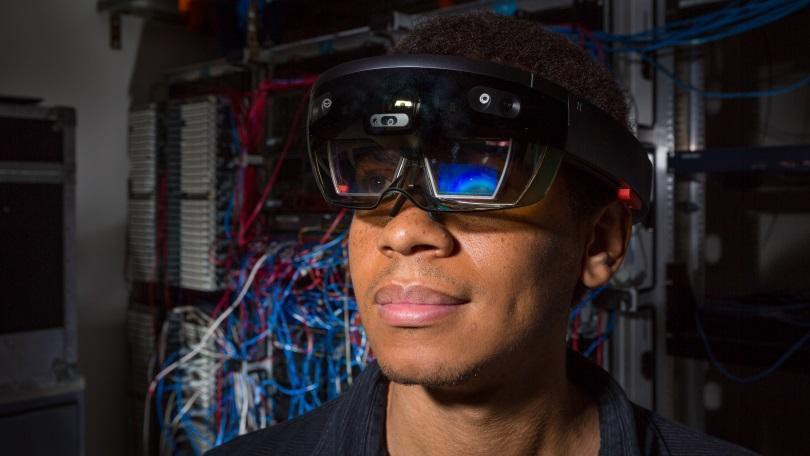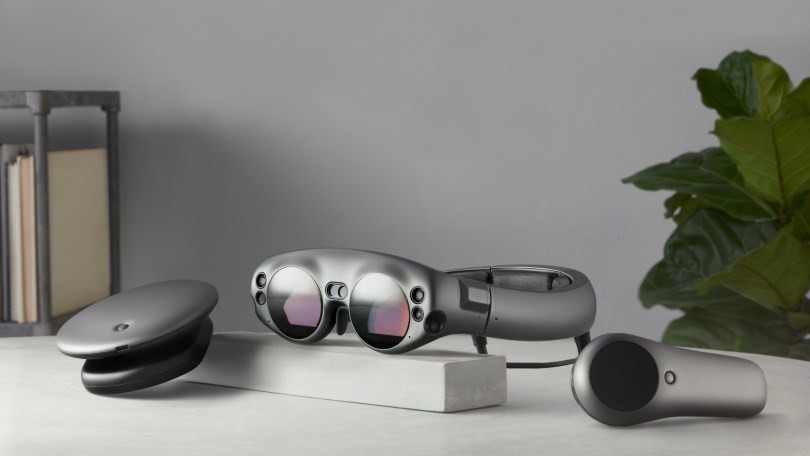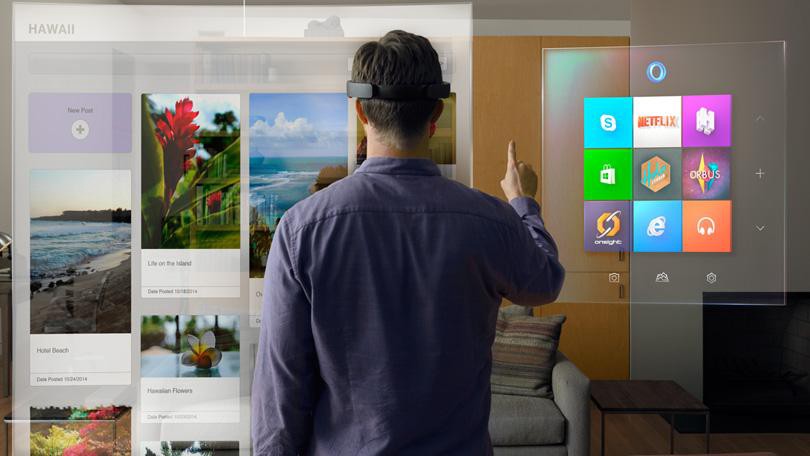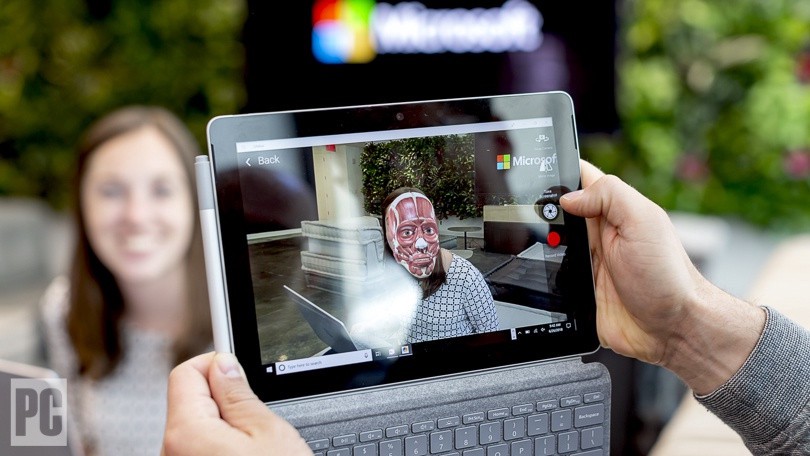A material about why augmented reality devices will not be able to replace smartphones in the near future …

Original material by Ben Dixon
At developer conference Facebook F8, Michael Abrash, Head of Research at Oculus, asked attendees to 'introduce AR glasses that complement our experience in a way that blurred the line between the virtual and real worlds, giving us a deeper experience. , stronger connections and a richer life. '
This month's news of the highly anticipated Magic Leap mixed reality headset marked a big step towards what Abrash and other industry experts envisioned as the future of virtual computing. The helmet is lightweight and comfortable, with crisp graphics, and has been reported to excel at many points where other augmented reality goggles and helmets have failed.
But one big step does not mean that we have entered a new era. The AR industry faces many obstacles to overcome to become “one of the greatest transformational technologies of the next 50 years,” as Abrash promised. Let's talk about the key challenges facing modern augmented reality technology.
Form factor
The shape and size of AR equipment continues to be a limiting factor. There is a relationship between the bulk and computational power of augmented reality devices: smart glasses like Google Glass are very lightweight and can be worn for extended periods of time, but their limited computational power makes them suitable only for very limited scenarios. They are ideal for professional use, such as in factories and hospitals, where workers need a hands-free way to access work information. But glasses like this are far from the ideal experience that could replace the hundreds of smartphone and PC apps we use every day.

Heavier helmets like Magic Leap One, Hololens and Meta are more advanced in functionality, such as mixed reality, environment mapping and gesture recognition. And they can provide a more cohesive and immersive user experience. But users cannot wear them for a long time – it is comparable to wearing a computer on the head.
“Today binocular glasses are too heavy and uncomfortable to wear for long periods of time,” says Tero Aaltonen, CEO of Augumenta. “The device may be packed with impressive technology, but it’s no use if it’s unusable or not popular with the mainstream.”
With Magic Leap One, the company bypassed the weight issue by putting heavy components in a Lightpack, a small handheld computer wired to the helmet. But the look also limits the use of mixed reality helmets, and this goes for the Magic Leap One too. I'm not sure anyone would want to walk around in a helmet that makes the wearer look like either a Robocop or a giant beetle.
line of sight
“The key aspect holding back the user migration to AR helmets is the field of vision,” said Taylor Freeman, co-founder and CEO of Upload.io. “To make the experience truly complete and convincing, you need a tangible field of view (FOV), ideally greater than 180 degrees, preferably 220 degrees.”
Due to hardware limitations, AR helmets are very limited in terms of field of view at this stage. In Microsoft HoloLens FOV is at 35 degrees, although the company is rumored to be working on a new helmet in which they intend to double that figure. Magic Leap One and ODG R9, another top-end mixed reality helmet, offer a 50-degree field of view. All of this is an improvement, but these helmets are still limited, especially when compared to human vision.

For consumer use, a limited field of view means a less cohesive experience, as the user has to look at virtual objects from afar, like looking at the world through a pipe.
In the workplace, the negative effects of a limited visual field can be much more serious than ordinary frustration. “In corporate use cases, it is imperative that the glasses do not interfere too much with the inspection, otherwise there is a risk of accidents,” says Aaltonen. This means that glasses that are open on the sides are safer for a professional workplace, they allow you to see the environment better.
User interaction
There has been a significant improvement in this aspect. But the industry is still trying in vain to develop the right tools to help users interact with the virtual environment. Some helmets, such as Google Glass and smart glasses from ODG, have touch pads on either side of the bezel that support swipes and taps to change and activate menu items. ODG also allows users to interact with applications and virtual environments through hand gestures. Other helmets are equipped with hand controllers; one of the thinnest controllers in the Magic Leap One, it has a lever, button and trackpad.
The problem is that touchpads are limited in functionality, hand gestures can be misinterpreted by the device in low light conditions, and hand controllers, as you would expect, take up at least one hand. Many helmets also support voice control, which is useful in situations where you need hands-free access to your device. But voice commands only support basic functions, for example, opening applications and activating functions such as recording or taking a photo. Their use is also limited in noisy environments.
Eye tracking can improve the user experience with AR helmets. The combination of eye tracking and voice commands enables more complex user interactions with virtual and physical objects without the need for hand gestures. For example, users can use voice commands to get information about the object they are looking at.

Another way to improve the user experience in AR applications is the brain-computer interface. Many companies are working on such a non-invasive interface, but we probably won't see a reliable example of the technology in augmented reality helmets for several years.
Cost and application
Magic Leap One costs $ 2,300, Microsoft HoloLens $ 3,000, ODG R9 and Google Glass Enterprise both cost $ 1,800. With such high prices, augmented reality helmets are only suitable for businesses where the ability to solve emerging problems can justify such large sums.
“There are specific use cases, such as training or manufacturing, where a few thousand dollars doesn't feel like a lot of money compared to the benefits these devices bring to the workflow,” Freeman says. “Once the price drops to iPhone and the technology can resonate with modern mobile devices, then I can expect to see the first shifts towards AR.”
At the moment, users can purchase a top-end smartphone (iPhone X, Samsung Galaxy Note 9 or Pixel 2 XL) for a much lower cost. All of these devices support a variety of AR applications, although they do not provide the full immersion experience of helmets. With a limited number of scenarios and such pricing, the latter are not particularly attractive to users. And without a user base, developers aren't particularly eager to create new apps.
The future of AR
“In 20-30 years, we will wear stylish glasses, not stylish smartphones. These glasses will have VR, AR and everything in between, and we will wear them all day and use them in every aspect of our life, 'Abrash dreams.
History has shown that we are not very good at predicting what and when will happen in the future. Since the appearance of the term 'artificial intelligence', scientists have said that an AI capable of competing with humans is about to appear: C-3PO, HAL 9000, Terminator are just a few examples. Over the decades, our AI still lacks the cognitive abilities of a child, although he began to extremely quickly perform certain tasks, such as playing chess, classifying images, and translating speech into text.
Just as laptops do not save us from full-fledged PCs, and smartphones from laptops, I do not see a scenario in which AR-helmets will become our only devices for computing and communication. But as the industry breaks down all barriers, AR helmets can be expected to become more common in the workplace and on the streets.
Original material by Ben Dixon
Still, the future that AR-helmet manufacturers and
'smart glasses' have not come yet, we need to test the technology to the end. Yes, everything is promising and promising, but all these promises are gradually beginning to get boring, the restrictions so far put a spoke in the wheels of this process. Plus, the technology has faced problems from outside the industry, so the development of, say, a legal framework has already postponed indefinitely the massiveness of devices such as Google Glass. Or will we wait? We seem to be no stranger to …
